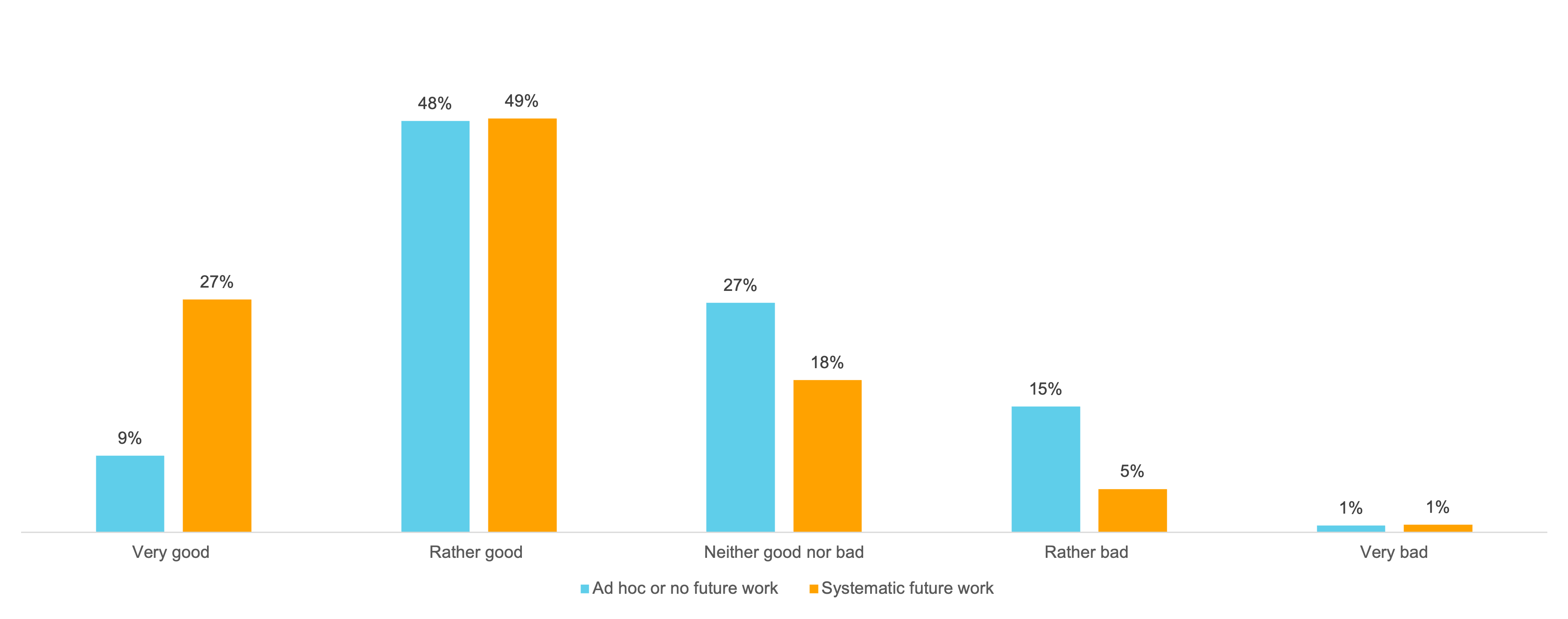To Lead in Uncertain Times
After a few turbulent years, many leaders are probably tired of dealing with uncertainty and working against the wind. Having to lay off employees is heartbreaking, and it's common to feel a sense of Sisyphean effort when new initiatives you've been working on have to be canceled. Others may be energized by the challenges and see every crisis as an opportunity to learn and grow.
In fact, without the downs, we wouldn't appreciate the ups, just as we wouldn't enjoy spring so much if we hadn't just experienced a grim Swedish winter.
Right now we all have to deal with genuine uncertainties of strategic importance - for individuals, organizations and countries. We need to understand what could happen and what it could mean for our organization, our company and ourselves. The big issues now include geopolitical instability and associated cybersecurity, climate change challenges, and AI and its impact on business. In the short term, an EU election awaits where new leaders will make their mark on decisions that affect Sweden in the long term.
No leader can know with certainty how the company/organization should best respond to different aspects of the uncertain future. But we can examine possible futures and thus prepare for different developments. We can explore possible scenarios and their consequences, and in times of great uncertainty and rapid change, such exploration is far more important than otherwise. Leading in uncertain times is not least about being able to see beyond the messy present and look at the longer term.
Understanding the Future with Scenario Planning
Scenario planning is a well-known and well-documented method for understanding possible future scenarios. Kairos Future's founder Mats Lindgren and former partner Hans Bandhold have written a book on scenario planning that has been translated into several languages and is used by universities and managers around the world. Scenario planning is about having an inquisitive approach to uncertainties and changes in the surrounding world, combined with a variety of methods to identify what might be classified as unidentifiable. This is done in order to transform insights about the future into strategic action.
The Uncertain Future Is Near
It is common for Kairos Future scenario planning to look ten, twenty, or thirty years into the future. However, in the uncertain world we live in, the method has proven its worth in evaluating the near future and identifying what strategic decisions could work best right now.
The future of a company or an issue is determined by two main developments: what we can assess as a certain development - trends - and what is more fluctuating in nature - uncertainties. Therefore, a thorough analysis is very important in order to identify the most dominant certainties and uncertainties. This requires meticulous research, and the subsequent analysis must be based on a rich set of data.
However, in terms of uncertain trends, a good starting point is to acknowledge your uncertainty and be able to say "we are uncertain about how this will play out". Since most people who claim to know how the future will unfold are wrong (there are of course countless quotes about people who were wrong about the future, see for example Worst Tech Predictions Of All Time), we should instead take a more modest approach to the topic by asking "how can this develop and what are the different identifiable alternatives?
Scenarios as a basis for strategic work
Scenarios are therefore used as a basis for strategic work, which can be done at a high and comprehensive level or at a more company-specific level. Scenarios can also be used as a means of exploring the future for a specific question within one's own line of business. Scenarios – and the process by which they are developed – bring clarity to complex questions about the future, whether the question is 30 years from now or 30 days from now. They help us see that the world can evolve in different ways than we are used to, by identifying both threats and opportunities, and by experimenting with the outcomes of different strategic choices. It is therefore a necessary complement to traditional, alternative forecasting, for example, on the evolution of distribution curves. Scenarios give us the tools we need to develop strategies and operational capabilities to change our own future. As a leader, you gain confidence by having a better understanding of what is coming next and how to act accordingly, depending of course on the outcome.
But not only that. While increasing your own and the organization's future readiness and having the opportunity to chisel out strategies to handle the next phase and act in the current circumstances, you also affect the well-being of the organization as a whole.
According to a survey we conducted with leaders in Sweden last week, systematic future work contributes to a much better atmosphere in the workplace.
Figure 1: Workplace atmosphere according to how systematic the organisation works with trend spotting. Click on the figure to see it in a larger format.
Feel free to contact me and I will tell you more about how it can be done in practice. In half a day you can get pretty far!
Johanna Danielsson CEO, Senior Partner
Read more about our basic course in scenario analysis that is available on request.

